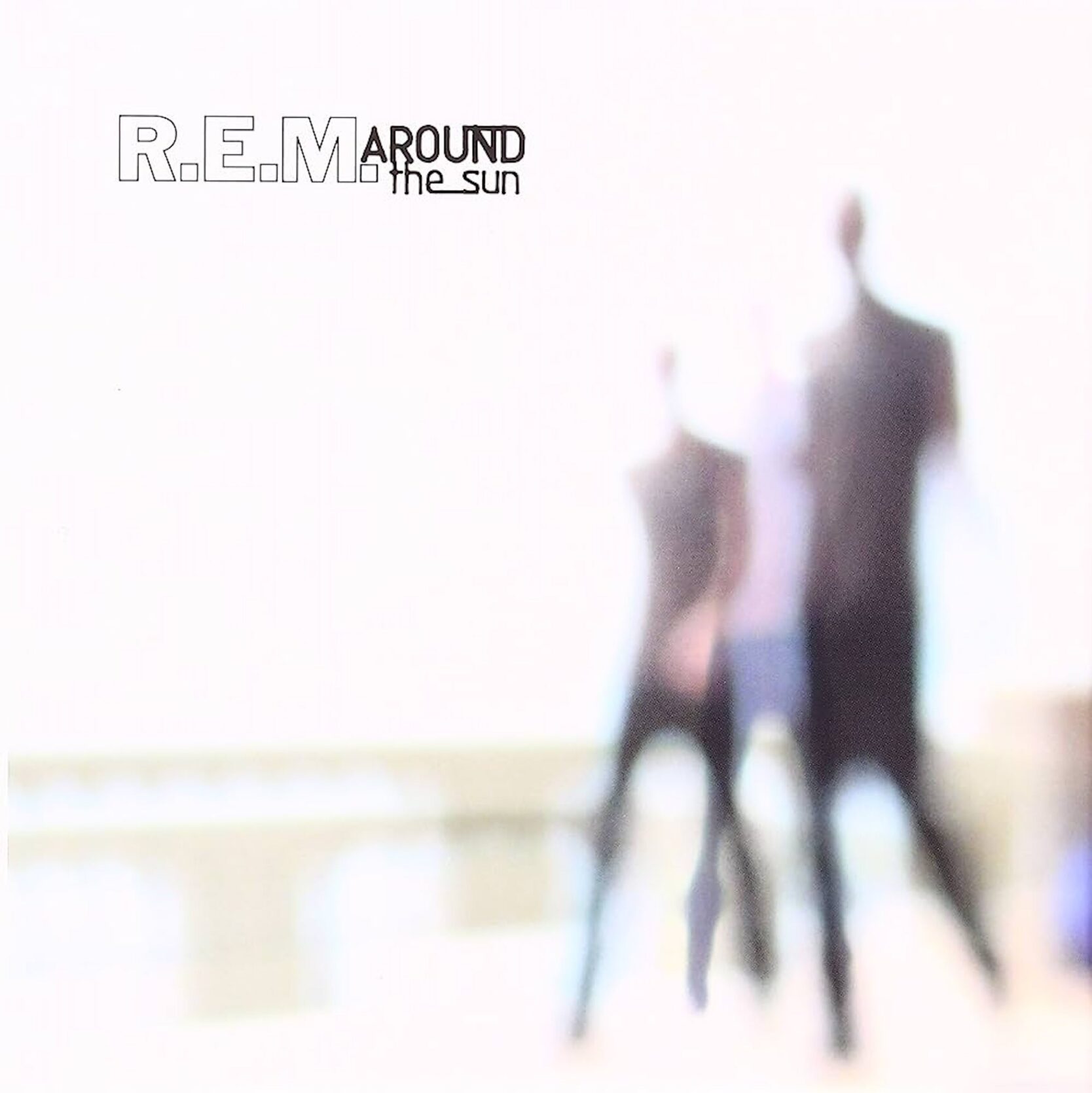Artists often describe the recording process as a battle, but for guitarist Peter Buck, making R.E.M.’s unlucky 13th album, Around the Sun, was more like war. A very specific war, in fact, and one the band had publicly criticized for years. “It was kind of like the war in Iraq,” he told SPIN in 2008. “We don’t know why we got in there, we don’t know how to get out, and we don’t know what we’re trying to accomplish.”
That’s a pretty succinct description of how good bands make blah albums—in this case, how one of the most respected bands of the ‘80s and ‘90s created what many consider to be the only blemish on their catalog.
R.E.M. was a flagship act that, over a 30-year career, weathered the transition from the American underground to the global mainstream, which means fans have a range of very different albums to claim as their best. However, pretty much everyone—including Buck—cites Around the Sun as a low point. As with other Worst Albums By Great Artists (St. Anger, Rock and Roll Heart, Down in the Groove), there’s something fascinating about this kind of failure and what it reveals about a band renowned for its egalitarianism and longevity. It’s still their worst album, but with R.E.M. defunct now for more than a decade, “worst” means something very different in 2023 than it did in 2004.
Nineteen years ago, the band was past its ‘90s heyday but had weathered enough storms to remain a global superpower, especially in Europe. They had soldiered on after founding drummer Bill Berry left in 1997, and they succeeded precisely because they used that shakeup as an opportunity to tinker with their sound and redefine themselves as a band. 1998’s Up, their first album as a trio, was a collection of experiments, a backwards glance at some of their favorite music of the 20th century: Brian Eno, the Beach Boys, glam rock, and southern soul. Reveal, their 2001 follow-up, was more focused: a breezy summer album, a collection of backyard reveries. Both have been targets of naysaying but hold up remarkably well for a band in transition.
With Around the Sun, however, R.E.M. and producer Pat McCarthy lost all perspective, first by getting too far away from the material and then by getting too close. They started recording in early 2002, and in March 2003 released a rough cut of “Final Straw” as a free single on their website, days after the invasion of Iraq. Those sessions were cut short early that year so the band could tour and promote In Time, a new compilation of their Warner Brothers output. In addition to readying two new singles and videos, they launched a world tour that started with a sprint through Europe before heading back to North America. Shortly after their last date, they flew down to Compass Point Studios in the Bahamas to finish up songs that were already more than a year old, then they moved up to Miami to start mixing. It was a tedious process, with Michael Stipe and Mike Mills commandeering the mixer and a frustrated Buck reportedly skipping town.
As a result, Around the Sun is a staid affair, overthought and unfocused, far too slick but also weirdly austere, as though they’d left most of the instruments on the cutting-room floor. There’s no lushness here, nothing like the tight interplay on their early albums or the weirdness of Out of Time or Automatic. Every song strikes roughly the same tempo and tone; there isn’t one true rocker. A few songs, notably “Boy in the Well,” try to rev things up, but can’t muster the momentum or disrupt the album’s plodding pace. Also, there’s very little of Buck’s guitar on these songs, presumably because he bailed during mixing and couldn’t advocate for himself. He shows up here and there, providing acoustic flourishes on “Final Straw” and “I Wanted to Be Wrong,” but he never feels fully present. It was almost like R.E.M. had lost another band member.
When Around the Sun met the worst reviews of R.E.M.’s career, it must have felt like the end of the world as they knew it—and that sense of doom amplified the album’s faults. It became an albatross, a scandal the band members had to address and explain in subsequent interviews. But, as Stipe sings on the album’s title track, “Hold on, world, ‘cause you don’t know what’s coming.” Their follow-up, 2008’s Accelerate, sounded like a direct response to the criticisms they had faced. It had heavier riffs, odder lyrics, actual rockers, and—most crucially—a sharper dynamic between the band members. It was everything Around the Sun wasn’t: loose, weird, imaginative, joyful, fun. They built on that foundation with 2011’s Collapse Into Now, which became their swan song, even though it doesn’t have the solemnity of a farewell.
R.E.M.’s end—as well as its afterlife—changes how Around the Sun plays in 2023. Now that we know how the band’s story concludes, it’s easier to disregard the album’s lows and appreciate the highs: The chorus of “Boy in the Well” sounds more sour in its accusations, the synths cut through “Final Straw” to create a more intense friction, Stipe’s vocals sound more daring on “Electron Blue,” and the Spanish-style guitar solo on “High Speed Train” sounds like a nod to Steve Harley & Cockney Rebel. It’s still too long, too shapeless, but a different kind of energy emerges from these songs, a different kind of rising action that starts with “Electron Blue” and culminates in the bouncy “Wanderlust.” There’s a logic to these songs and their sequencing, even if it’s partially obscured by the production and mixing.
Perhaps because it starts with a song called “Leaving New York,” Around the Sun sounds like their New York album. The city has always been a boomtown for Athens bands, including the B-52’s, Pylon, and the Drive-By Truckers, and Stipe in particular found inspiration in the city when he first visited in 1979. There are moments throughout the album that suggest these songs are set in that metropolis, or the band is speaking directly to its inhabitants, or sketching its street corners and skyline, or simply walking along its sidewalks and down its alleyways. It’s an affectionate valentine, a gentle reassurance to a city still reeling even three years after 9/11. Perhaps this is an album meant to be played on headphones while walking around Manhattan, no destination in mind, choosing your route based on which street might hold the most delights. Maybe the music’s austerity is just space for you to add your own sounds.
R.E.M. is reissuing most of its post-Berry albums on vinyl this year, but Around the Sun, more than anything that came before or after, demands a sprawling box set, one that digs deep into the vaults and unearths old demos, discarded takes, unused mixes, and weird studio experiments. Some of their best songs didn’t even make the final tracklist, like “I’m Gonna DJ,” which started as a dirge before they livened it up on 2007’s Live and again on Accelerate. That set would tell a very different kind of story—a saga of fragmentation among friends rather than an epic of creativity and collaboration.
Failure can be just as compelling as success, especially for a band that took frequent risks but rarely stumbled. Around the Sun remains singular in R.E.M.’s catalog, which means it still has new stories to tell us, new corners for us to explore.





